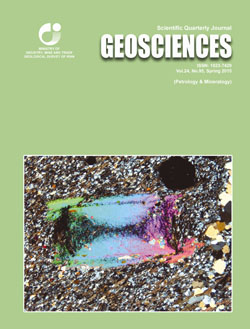Document Type : Original Research Paper
Authors
1 Master of Science, Geological Survey of Iran, Tehran, Iran
2 Assistant Professor, Department of Geology, Faculty of Sciences, University of Zanjan, Zanjan, Iran
Abstract
The studied area is located in the southeastern end of the Sahand- Bazman Magmatic Belt in the north of Bazman volcano. This area composed of Miocene volcanic rocks including andesitic to dacitic lavas along with tuffaceous sandstone, ignimbrite, agglomerate, tuff and siltstone that underwent propyilitic, argillic, sericitic, carbonatic and silicified alterations. Predominant form of the mineralization is silica veins and hydrothermal breccia, which crop out within the alteration zones. The textures within the silica veins include coliform, vuggy, stratiform, banded and hydrothermal breccias. The results of sample analysis demonstrate that hydrothermal breccias have the highest grades of Au (up to 27.6 ppm), and the silica veins with banded texture and fine grained sulfide bearing silica veins are other important Au- bearing mineralization in the next orders. The geochemical investigations demonstrate good positive correlation between Au and Ag, Sb, As, Pb, Zn, Mo, Bi and Hg in the Au- bearing silica veins. The fluid inclusion studies on silica veins with banded texture indicate that the salinity of fluids is 1.22-7.77 W% NaCl, and homogenization temperature is 190-296◦C. Based on the field evidences along with mineralogy, textures and structures of silica veins, geochemical and fluid inclusion investigations, the Au mineralization in the north of Bazman can be classified as low sulfidation epithermal gold deposits.
Keywords

